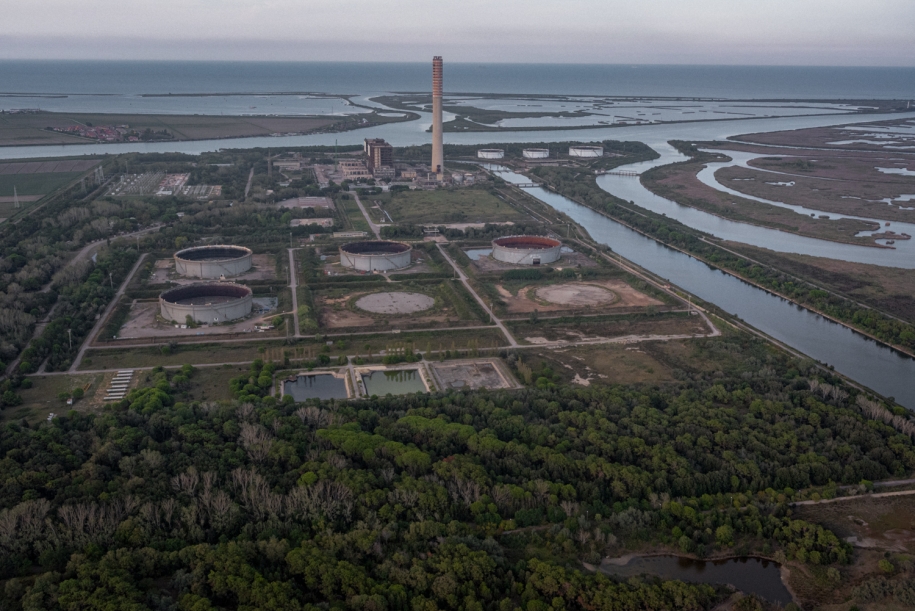

A helicopter aerial view of part of the 300-hectare industrial site of the thermoelectric power plant, currently undergoing decommissioning, located at the mouth of the Po di Pila. The environmental redevelopment project for the area, which hosts the plant, has engaged local residents and associations, the University of Padua, the Polytechnic University of Milan, the Veneto Region, and Enel. The initiative aims to boost sectors such as tourism, agri-food, and fishing, while safeguarding local employment and maximizing the reuse of waste materials in addition to the conservation of the Po Delta ecosystem, one of the most important wetlands in Italy and Europe. An opportunity for redemption both for the inhabitants of Polesine and for the surrounding environment. Polesine Camerini, September 7, 2022.
The leap of fish that dream of flying
Photographer: Isabella Franceschini
Exhibit Title: The leap of fish that dream of flying
Location: Italy
The Veneto Po Delta – a UNESCO World Heritage Site – is a vast natural area in northern Italy where the Po River meets the Adriatic Sea near Venice. Spanning 18,000 hectares, it supports a community of about 73,000 people. Human settlements have had to adapt to the ever-changing morphology of a landscape shaped by the interaction of river, land, and sea, constantly threatened by floods and subsidence. The local population has passively suffered exploitation—from Venetian aristocrats to methane extraction and the unfulfilled promises of a 1950s thermoelectric power plant. Today, the community seeks redemption through the sustainable redevelopment of the former plant into an eco-friendly tourism model. However, climate change poses severe threats, including the uncontrolled spread of blue crabs, saltwater intrusion, and drought emergencies affecting rice crops, with the looming risk of submersion by 2050—underscoring the urgent need to protect both the environment and the community.
From 2021 to 2024, my work documents the struggle of a community to survive in its surrounding environment, a territory entirely below sea level. This deep relationship of subsistence reflects the challenges of addressing the environmental consequences of climate change. The area is particularly at risk from ongoing glacier melting and thermal expansion of the seas, which could submerge it by 2050. This scenario calls for urgent reflection on the need to ensure the sustainability of a territory and a community that are as fragile as they are valuable — a community still waiting for social redemption.
https://www.isabellafranceschini.com
info@isabellafranceschini.com
https://www.instagram.com/isabella.franceschini/
Make Comment/View Comments